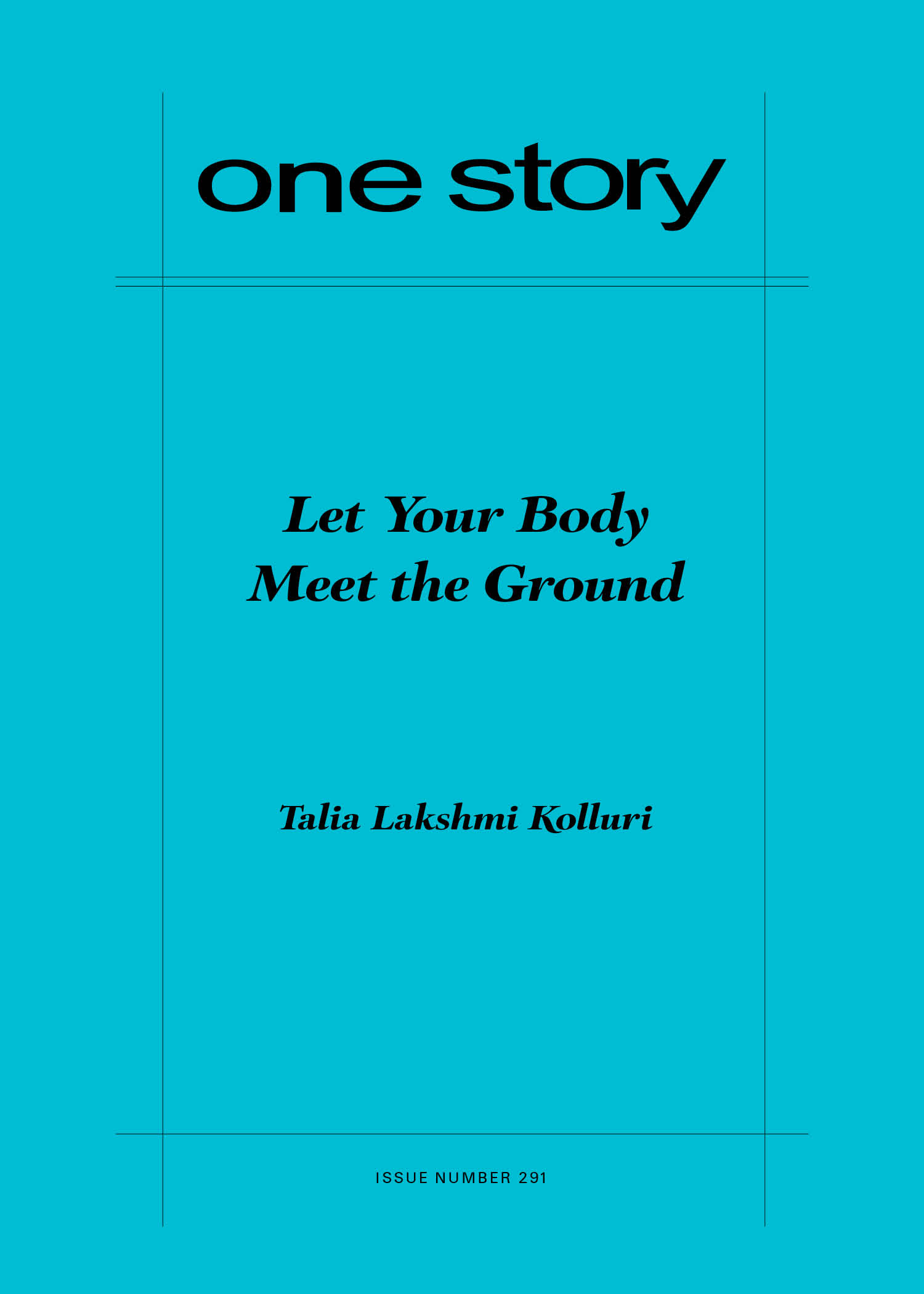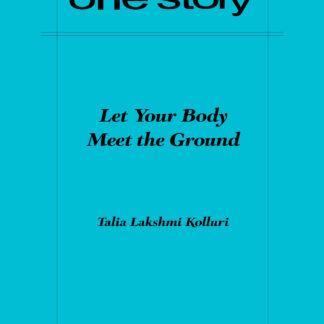
Let Your Body Meet the Ground
$2.50
263 in stock
Excerpt
The way it was before, after night-rest on the edge of the roof of the tea stall, the sun would flood the sky with colors, and I would begin to calibrate my sun compass. As the dawn light brightened into day, it would filter down into the streets and alleys of the market in Chandni Chowk, like ink spreading in water. And from my home roost at the tea stall, lines would run out over the city showing me all the places I could fly to. I would take to the air and fly over and around Old and New Delhi, watching the lines change color to show me where I was going. Orange for my home roost. Pink for the roosts of my friends. Yellow for the cricket stadium where we would go to gather discarded food from crowds. Green to the water fountains. Blue to the metro stations. Violet leading to the forest on the other side of the river. Among all the tangled threads of my homing lines sat a tall red building with a courtyard, right next to the Lal Mandir. It is the Charity Birds Hospital.
Talia Lakshmi Kolluri
Talia Lakshmi Kolluri is a mixed South Asian American writer from Northern California. Her debut collection of short stories, What We Fed to the Manticore, is forthcoming from Tin House in September 2022. Her short fiction has been published or is forthcoming in the minnesota review, Ecotone, Southern Humanities Review, The Common, Five Dials, and others. A lifelong Californian, Talia lives in the Central Valley with her husband and cat. Learn more about Talia at www.taliakolluri.com.
Patrick Ryan on “Let Your Body Meet the Ground”
When I was a boy, Jack London’s The Call of the Wild and White Fang were two adventure novels that held me glued to my chair—not because I was in awe of the author’s ability to render the interior world of animals, but because I love animals, love reading about them, and love getting a sharply imagined glimpse at what it might be like inside their heads. I devoured both those novels (and many others like them) without considering that there was a person—an author—between me and that animal protagonist.
Talia Lakshmi Kolluri has taken me back to that place of pure enjoyment with “Let Your Body Meet the Ground.” Only, instead of a wild wolfdog or a sled dog in the Yukon and Northwest Territories, her protagonist is a wounded pigeon in Delhi.
One of the greatest things a short story can do is transport us to places we’ve never been and allow us to experience things vicariously that we might never experience otherwise. I’ve never flown over Delhi, never fallen injured from the sky, never been taken to a bird hospital and introduced to a mysterious person known as Toy Man. Talia Lakshmi Kolluri hasn’t done any of those things either, but she’s imagined them beautifully through the eyes of a pigeon in a story that’s filled with trust, hope, and heart. “Let Your Body Meet the Ground” elevated me the first time I read it, and, despite its title, it continues to hold me aloft. I hope it does the same for you.
Q&A by Patrick Ryan
- PR: Where did you get the idea for this story?
- TK: The idea for this story first took root when I read about the Charity Birds Hospital in a wonderful piece in The Atlantic by Ross Andersen called “A Journey into the Animal Mind: What Science Can Tell Us About How Other Creatures Experience the World.” I think the tagline for this piece was “what the crow knows,” and I was immediately curious. The article is pretty wide-ranging and includes a discussion on how animal consciousness is framed within the Jain faith and how western philosophy has been inclined to believe consciousness belongs almost exclusively to humans. It also describes some of the daily activities of the vets at the bird hospital and their experiences with particular birds. And I started to wonder what it would mean to a bird to be the recipient of this kind of caretaking and stewardship where the whole underpinning is this assumption that all creatures have emotional lives and a sense of self.
- PR: Your upcoming collection is comprised of short stories all told from the points of view of animals and sea creatures. Is the book the result of an intention from the get-go to have such a collection, or did the idea for such a book come about after the stories had been written?
- TK: I didn’t know that I was writing my collection all from animal perspectives from the very first story, but once I wrote the second story I was absolutely committed. I really love writing this way. It feels so right to me to narrate from animal points of view, and I would love to keep doing it for as long as possible.
- PR: How long did it take you to finish a draft of “Let Your Body Meet the Ground” that you were happy with?
- TK: It took me about two months to write a draft that I felt was ready, which is actually kind of fast for me. I tend to be a slow writer.
- PR: The story’s ending surprised me. I don’t want to give anything away to our readers who haven’t read it yet, so I’ll just ask a fairly generic question: Was that the ending you always had in mind, more or less?
- TK: It was very similar to the ending that I had in mind except that in an early draft, it was written so that our narrator observed a different character go through the experience, instead of having it herself. But it felt much more honest to give the ending to the narrator.
- PR: Were there any surprises for you in the writing of this story?
- TK: I think every story surprises me. I often feel that there is a cavernous distance between what I see in my mind and heart and what I am able to render on the page. It usually feels like hearing a symphony and then playing it on a kazoo, but I really was surprised at how that distance was much smaller for this one.
- PR: You write about these animal characters in the first-person voice, which I find admirable. How much research did you do for these stories in terms of animal behavior? And did you research as you wrote or before you started?
- TK: I think I’m probably like most writers in that I can get absolutely sidetracked by my research. I love doing it. I wrote this collection over a decade and I read so much wonderful work on animal behavior and conservation, and I learned so many wonderful things. I usually do a little bit of research before I start to orient myself in a place, then I get the voice out, and then I do more research as I revise. For this story, I did a lot of research on pigeon navigation, basic human navigation through Delhi, and also research on the history and operation of this particular hospital.
- PR: How did you decide how much knowledge of the human world to assign the pigeon and how much human terminology the pigeon would have to work with?
- TK: I have a personal theory that because animals are often forced to share space with humans, they engage in their own observations of us and do what they can to understand the world around them. We are part of an urban pigeon’s landscape. In order to survive, it’s necessary for them to recognize patterns in what we do and to develop some personal understanding of our behaviors. But also, they have repeated exposure to humans. So the greater their exposure, the greater meaning they are able to glean from what we say and what we do. In my mind, it’s sort of the same way I can identify what I think my cat is trying to say when she does certain things or meows a certain way. It’s the idea that familiarity breeds understanding. So I gave my city pigeon a pretty big human vocabulary. If she had been a wild bird, I think she would have been much more confused in her circumstances.
- PR: What are you working on now?
- TK: I’m in the early stages of writing a novel, also featuring primarily animal characters.
- PR: What’s the best piece of writing advice you’ve ever received?
- TK: Oh wow, this is a tough one to answer because I’ve received a lot of really great encouragement. I think probably the two most helpful pieces of advice came as bookends to this collection. The first came from my spouse very early on when he told me I needed to make sure to render the setting as fully as I could because he wanted to be able to see what was in my imagination. So I’ve tried to keep that in mind as I wrote the later stories, and I think it made the stories much richer. The second came from my wonderful editor as I was finishing the last stories in this collection. She told me to not be afraid to “get a little weird.” And what she meant was that I should feel free to take risks with my stories, and to break rules, and to maybe not worry about rules at all in the first place. And I think I really needed to hear that I had permission in a way to write unrestricted by any expectations. It really helped me find my way at the end.
